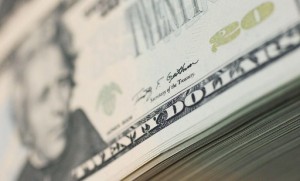
The country’s foreign exchange reserves hit an all-time high of $84.25 billion at the close of 2012, buoyed by the central bank’s dollar purchases that were meant to temper what could have been a sharp appreciation of the peso. MARK WILSON/GETTY IMAGES/AFP
The country’s foreign exchange reserves hit an all-time high of $84.25 billion at the close of 2012, buoyed by the central bank’s dollar purchases that were meant to temper what could have been a sharp appreciation of the peso.
The yearend gross international reserves (GIR) were enough to cover a year of the country’s import requirements and were nearly six times the combined foreign currency-denominated debts of the government and private entities maturing within a year.
The latest amount of GIR was up by about 12 percent from $75.30 billion the previous year.
The BSP admitted that it had been buying dollars from the market to prevent a steep rise in the value of the peso against the greenback.
Officials said that under its policy, the BSP allowed the exchange rate to be generally determined by the market, but intervened through currency trading in cases of significant volatility pressures. They said the sharp and sudden rise or fall of the peso was disruptive to businesses and to the economy.
The peso closed at 41.05 against the dollar at the last trading day of 2012, gaining nearly 7 percent since the start of the year. The peso was the second-fastest appreciating Asian currency against the dollar last year after the Korean won, which rose 7.17 percent.
Exporters said the rise of the peso has made Philippine-made goods more expensive in dollar terms and less competitive. The appreciation of the local currency has also reduced the peso value of the dollar remittances sent by overseas Filipinos.
The BSP has sufficient dollars to buy from the market given the robust inflow of remittances, foreign investments in the local business process outsourcing (BPO) sector and external portfolio investments.
Officials said foreign portfolio investments were substantial in 2012 because the favorable performance of the Philippine economy fueled the appetite for peso-denominated securities.
The heavy dollar purchases by the BSP pushed its expenditures and led to a net loss of about P68 billion in the first three quarters of 2012, its latest income statement showed.
Nonetheless, the BSP said it would not hesitate to continue buying dollars if appreciation pressures on the peso remained significant this year.
The BSP said the accumulation of dollars has its benefits to the economy. The increase in the GIR reflected the improving capacity of the Philippines to pay its dollar-denominated debts. This, in turn, has led to improved credit ratings for the country.